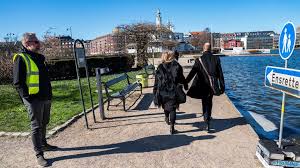The world is slowly reopening, a new study by the World Tourism Organization (UNWTO) indicates, how certain destinations cautiously ease travel restrictions introduced in response to the COVID-19 crisis.
At the same time, this specialized agency of the United Nations published its Global Guidelines to reopen tourism, where it points out the way for the transition to a de-escalation that allows the sector to return better and stronger, so far only 3% of tourist destinations around the world have taken some steps to ease travel restrictions.
UNWTO has been monitoring the global response to COVID-19 since the start of the Pandemic. The fourth edition of its COVID-19 report: “Related Travel Restrictions: A Global Review for Tourism”, now released, re-examines the measures of 217 destinations worldwide.
The study shows that 7 well-known destinations have reduced travel restrictions for international tourists. At the same time, several other destinations are immersed in significant debates about how and when to reopen their borders.
Regaining confidence
The report also notes that 100% of the world’s destinations continue to have some form of travel restrictions related to COVID-19. Also, 75% continue with their borders completely closed to international tourism. In 37% of cases, travel restrictions have been in force for 10 weeks, while in 24% of world destinations, restrictions have been in force for 14 weeks or more.
UNWTO Secretary-General Zurab Pololikashvili said: “Reducing travel restrictions responsibly and at the right time will help to ensure that the many social and economic benefits of tourism can be recovered sustainably. All this will contribute to the livelihood of millions of people in the world”.
The sector is an engine of sustainable development and a pillar of economies. UNWTO strongly highlights the need for vigilance, accountability, and international cooperation as the world gradually opens up again.
Mr. Pololikashvili also welcomed the confidence in the global tourism sector, noting that it is ready to return to sustained growth. While tourism has been the hardest hit of all the world’s major economic sectors, UNWTO has led a joint response, and last week released its “Guidelines for Reopening Tourism”. These guidelines outline the steps that governments and the private sector can take to accelerate recovery in the coming months.
The National States that depend on tourism remain closed

Taking a close look at global travel restrictions, the UNWTO study shows that more tourism is important to a destination’s economy, the higher the chances that it has completely closed its borders.
In the case of small island developing states (SIDS), 85% continue with their borders completely closed for tourists. In all UNWTO regions, more than 65% of its destinations are completely closed to tourism: Africa (74%), the Americas (86%), Asia and the Pacific (67%), Europe (74%), and the Middle East (69%).
This report on travel restrictions related to COVID-19 also breaks down the levels and types of travel restrictions in force, including the prevalence of airline suspensions and measures such as mandatory isolation and quarantine of tourists on arrival. This current report and past editions are available on the UNWTO website.

